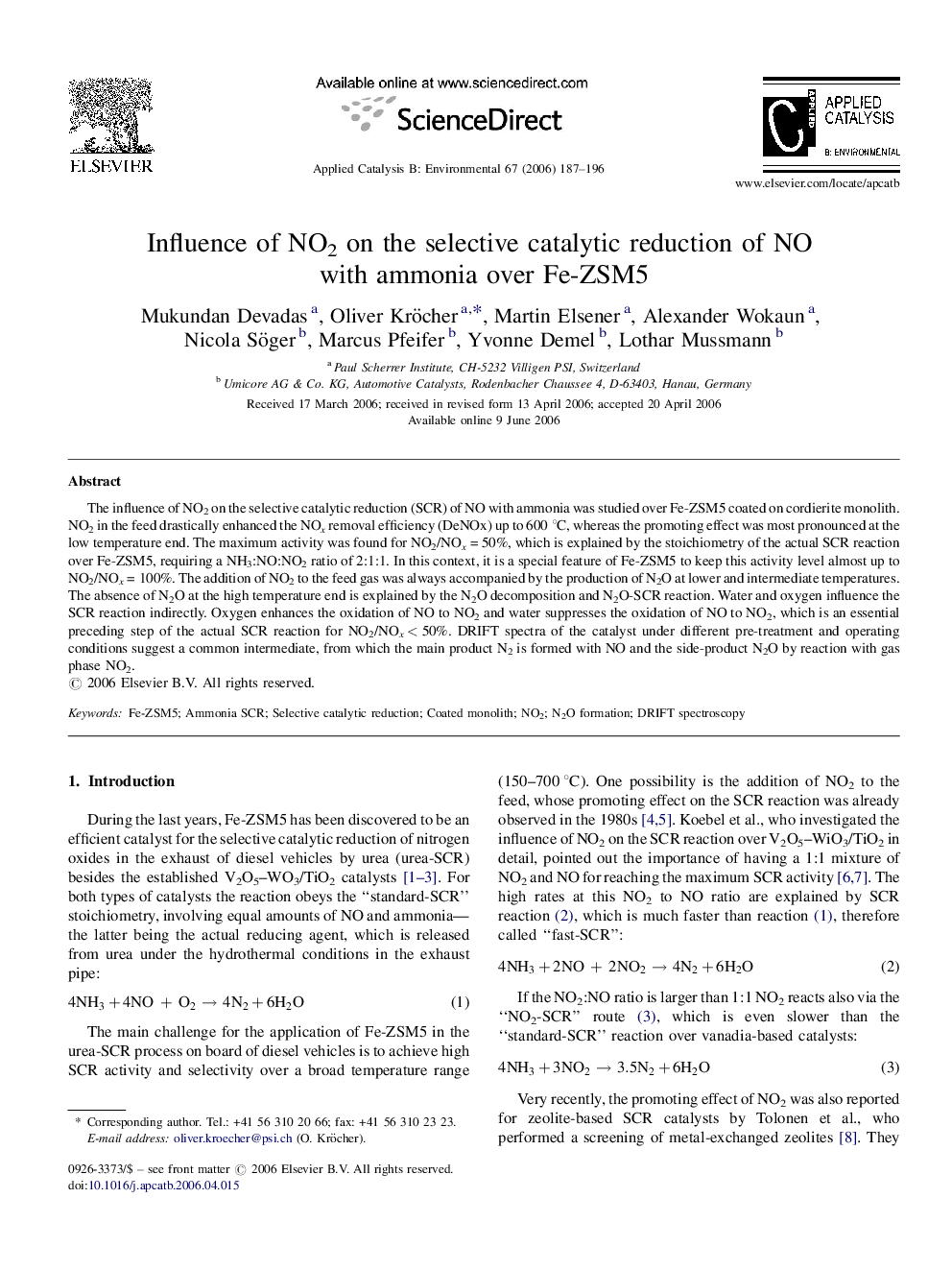| Article ID | Journal | Published Year | Pages | File Type |
|---|---|---|---|---|
| 48860 | Applied Catalysis B: Environmental | 2006 | 10 Pages |
The influence of NO2 on the selective catalytic reduction (SCR) of NO with ammonia was studied over Fe-ZSM5 coated on cordierite monolith. NO2 in the feed drastically enhanced the NOx removal efficiency (DeNOx) up to 600 °C, whereas the promoting effect was most pronounced at the low temperature end. The maximum activity was found for NO2/NOx = 50%, which is explained by the stoichiometry of the actual SCR reaction over Fe-ZSM5, requiring a NH3:NO:NO2 ratio of 2:1:1. In this context, it is a special feature of Fe-ZSM5 to keep this activity level almost up to NO2/NOx = 100%. The addition of NO2 to the feed gas was always accompanied by the production of N2O at lower and intermediate temperatures. The absence of N2O at the high temperature end is explained by the N2O decomposition and N2O-SCR reaction. Water and oxygen influence the SCR reaction indirectly. Oxygen enhances the oxidation of NO to NO2 and water suppresses the oxidation of NO to NO2, which is an essential preceding step of the actual SCR reaction for NO2/NOx < 50%. DRIFT spectra of the catalyst under different pre-treatment and operating conditions suggest a common intermediate, from which the main product N2 is formed with NO and the side-product N2O by reaction with gas phase NO2.
